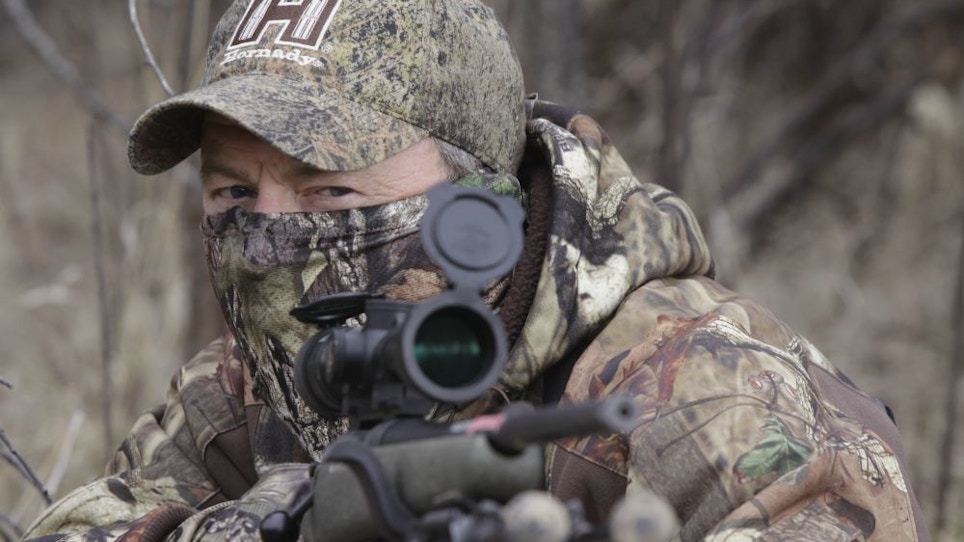
The craze in long range shooting is expanding the optic market exponentially, including in predator hunting. It could be the answer to your hung-up predator dilemma. (Photo: Mark Kayser)
Do you need a high-tech riflescope for your predator rig or is a simple optic sufficient for your current hunting world?
Begin your search to divine answers with a series of questions. Start with your hunting today and future desires. What situations do your current hunts entail? Do you shoot near or far? Next, do you plan on going on any future hunts where shooting situations could transition to long range? Follow that question with the predator encounters you expect. Will they be fast and fleeting or lingering and long? Finally, how techy are you? Do you like gizmos with sophistication and an expanded learning curve or do you like things simple?
If you want to embrace a new caliber with long-range possibilities, then you have options when it comes to technologically advanced riflescopes.
Nearly every major riflescope manufacturer offers riflescopes with increased magnification, defined reticles, lighted optics and precision adjustments. My latest jump into the tech world includes the Sig Sauer’s BDX system, Ballistic Data Xchange, that includes trajectory data transmission between a Sig Sauer BDX rangefinder and a Sierra model compatible riflescope. Wireless, Bluetooth technology enables the data to be shared between the two devices. When you range with the preset rangefinder it simultaneously sends trajectory and windage details to the riflescope. The illuminated reticle automatically adjusts making aiming at long-range coyotes that much faster.
Of course, the technology required learning, inputting and practicing with a new system is a must. That means your brain must process the steps required to make the electronic gadgetry work. You also must be cognitive of battery supply for all devices involved. That includes power for the rangefinder, riflescope and your smartphone.
My hunting world is typically open sagebrush with most shots occurring from 150-300 yards. It’s not often I get run over by coyotes at point-blank unless I travel into the Great Plains and target early-season coyotes. For me, a bit of easy-to-learn tech is a bonus as long as I pack along extra batteries.
You might find yourself on the opposite side of the field. Your hunting view could be less than 150 yards with critters showing up faster than a package from Amazon Prime. During a hunt to Kansas last winter the majority of coyotes ran to calls quickly to distances less than 100 yards. Aiming needed to be quick with no time to adjust for anything, including the power setting on the scope. You were either ready to shoot in seconds or the opportunity trotted out of sight.
Many locations in the Eastern part of the nation are characterized by big woods, small openings and fast predators. A quality 3x9 riflescope can answer any predator hunt demands. Keep it on four power for most encounters and if a coyote stands across from you on a picked cornfield edge you can crank it to 9 power for precision. You don’t have to worry about trajectory, multiple reticle hashmarks and whether you forgot to return your clicks back to zero.
Heck, even a red dot optic could handle your situations if you can see the frosty breath of your quarry. Team a no-brainer riflescope with a flat-shooting caliber like the .22-250 Remington and you can hit predators out to 300 yards with less than 5 inches of drop. New calibers like Hornady’s 6mm ARC give you even more performance in an AR platform for a short, fast-swinging firearm to handle close- and long-range situations with ease.
The craze in long range is expanding the optic market exponentially. It could be the answer to your hung-up predator dilemma, but if you don’t need it, simple is just fine for close-quarter’s encounters.
So what’s your answer to the optic world? Do you like a bit of Star Trek or are you just fine with a Marshal Matt Dillon view?





